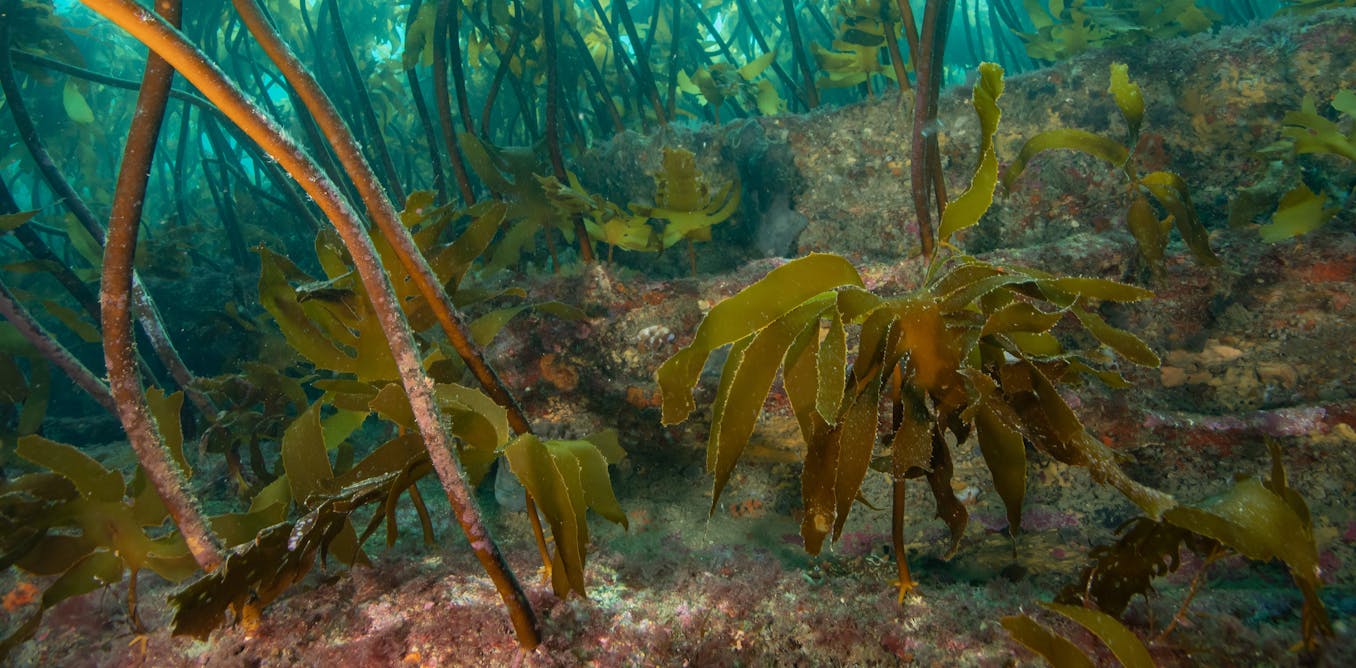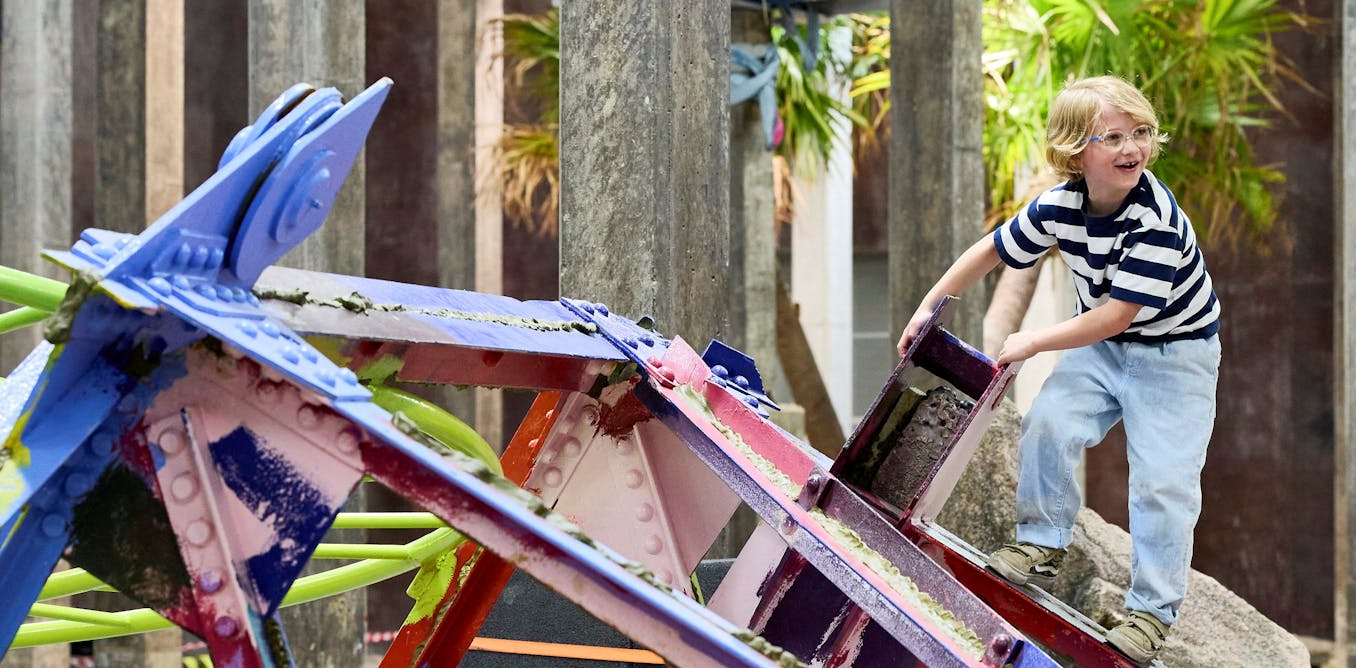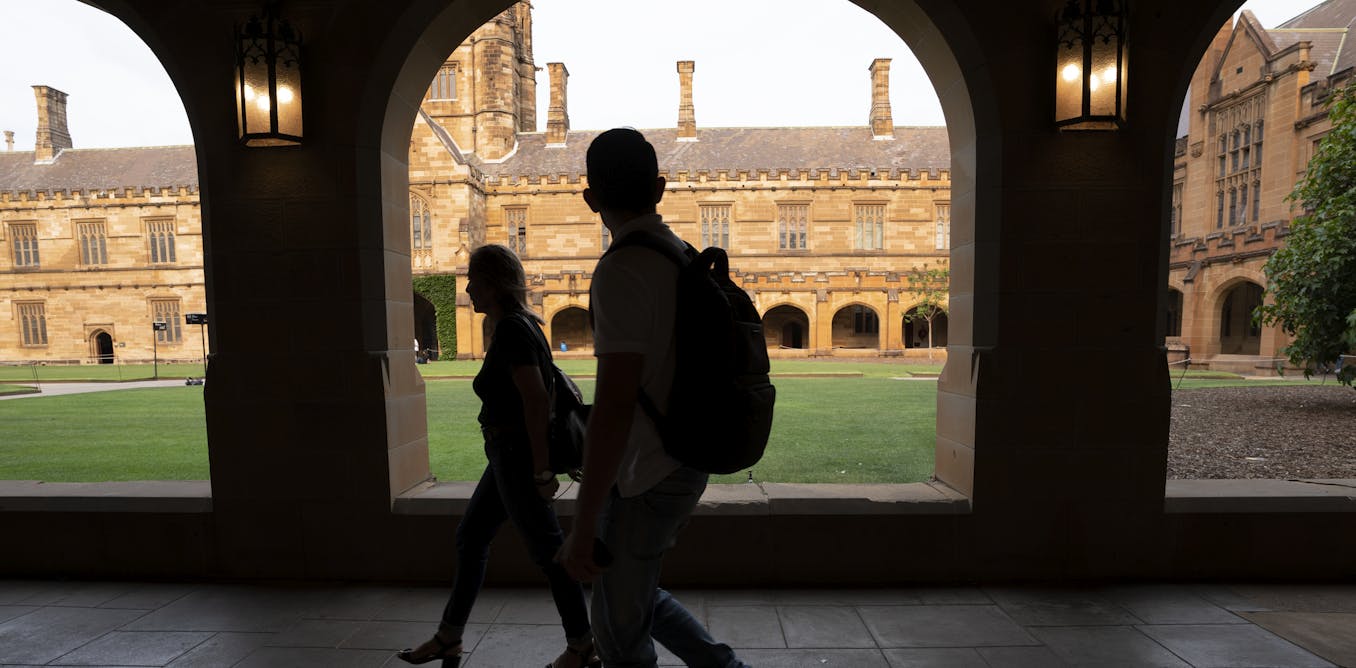Technology
'These monsters are thriving': Paedophiles have infiltrated childcare centres
Paedophiles have infiltrated Australia's $22 billion childcare industry by exploiting lax regulation, piecemeal oversight and glaring staffing inadequacies, a major Four Corners investigation has uncovered.
The full scale of this crisis has been hidden — until now.
We have identified almost 150 childcare workers convicted, charged, or accused of sexual abuse and inappropriate conduct. Half of the 42 people convicted were sentenced in the last five years alone and another 14 are currently before the courts.
The public records we have pieced together show the rate of offending in childcare is increasing — exposing a system that has allowed predators to thrive.
With barely 15 per cent of reports of child sexual abuse leading to charges and only 2 per cent leading to a conviction, experts say the real number of predators who have worked in childcare over the years is likely in the thousands.
Drawing on more than 200,000 pages of previously confidential documents, police tip-offs, court records and evidence from parents, educators, whistleblowers and experts, the investigation exposes a system so broken it has created a perfect storm for abuse.
"The psychology of these people is to seek out opportunity, and childcare centres represent an excellent opportunity for them," said Drew Viney, the former head of AFP's National Victim Identification Unit, who helped catch one of the country's most prolific paedophiles, childcare worker Ashley Griffith.
"The safeguards aren't there … there's failures at multiple levels from what I've witnessed firsthand."
"These monsters are thriving in these spaces because it's so easy for them," said the mother of a child who was repeatedly sexually abused by Griffith in NSW.
Our analysis shows that most of the abuse occurs in for-profit centres, where cost-cutting, high staff turnover, and routinely breached or gamed child-to-staff ratios leave supervision dangerously thin.
Staff burnout, low pay, and fast-tracked training courses are also gutting quality and oversight.
It's a trend that worries Michael Bourke, a global authority on child sex offenders. A forensic psychologist who has interviewed more than 1,200 offenders, he founded and led the US Marshal Behavioural Analysis Unit — one of the first teams to use behavioural science to hunt offenders.
"Predators are drawn to childcare for the same reason that fishermen are drawn to the place where there's the most fish," Dr Bourke said.
"The predators are going to look for any prey-rich environment, any environment in which there's children, and then there's a decreased chance of being detected. So they're going to be looking for places where there's instant trust … and lack of supervision."
Warning: This story includes details of sexual abuse
The true scale of failures
Some of those with cases before the court can be named, others remain hidden behind suppression orders.
Joshua Dale Brown is accused of assaulting eight children and producing child abuse material where he worked. Sydney educator David James allegedly filmed 10 children across six of the 60 services he worked at before he was arrested.
One of the 13 who cannot be named was arrested in July, accused of taking explicit pictures of ten children over a three-year period. He worked at multiple childcare centres around Sydney for more than a decade, undetected. Police only became aware of him after he uploaded abuse images to a cloud server.
Scratch the surface and a sense of the true scale of the failures is revealed.
Four Corners has accessed the largest-ever database of childcare regulator files — more than 200,000 pages of documents previously kept from public view — containing alarming findings about the sector in New South Wales, Australia's largest childcare market, and a stark reflection of what is happening nationally.
The files reveal widespread gaps in safety, with hundreds of centres breaching child safety laws.
There are more than 700 cases involving missing, expired or unverified Working With Children Checks, which is meant to be a fundamental safeguard to keep predators out of childcare. This means children are being cared for by people whose backgrounds were never properly vetted.
There are dozens of incidents of alleged inappropriate sexual touching and kissing by educators: biting a child on the back of the neck in a "hidey hole"; filming a child's genitals; showing images of genitals to children; tickling children's inner thighs; a child touching herself and saying "[an educator] told me to do my exercises today".
The files, which cover the years 2021 to 2024, include hundreds of cases of poor supervision and breaches of staff ratios — a key line of defence in keeping children safe.
There are scores of centres where educators don't understand child protection or mandatory reporting obligations, and centres with chronic deficiencies in record keeping — which makes it hard to track educators as they move from centre to centre.
In most cases the regulator responded with a caution or warning letter to the centre to do better, even in repeat cases.
NSW Greens MP Abigail Boyd has been working with Four Corners to access these previously hidden files. She is horrified, albeit not surprised, by the extent of sexual abuse and the failure of the regulator.
"When you look through the documents and you see the same patterns in all of these places, and it is, it's lack of staffing, it is a lack of regulatory response. It's all these factors coming together that create all these gaps for these paedophiles to wriggle through," Ms Boyd said.
"We've had this unregulated sector that has been infiltrated by these profit takers and it's created all these holes for these bad people to worm their way through and do atrocious things.
"It's ripe for paedophiles to move in.
"They look for scenarios like that. They look for sectors like this. This lack of regulation, this lax approach to allowing these providers to continue at all costs."
'We need to wake up'
Four Corners has spent months piecing together court documents and public records to build a nation-wide database of almost 150 childcare workers convicted or accused of child sexual abuse or inappropriate conduct.
Some date back decades, but the vast majority offended in the last ten years.
Some cases had slipped through barely noticed, like educator Matthew Shane Jones. He was found guilty in 2023 of repeatedly abusing a four-year-old girl at a Hobart childcare centre, including taking photos while she used the toilet and exposing himself to her in the bathroom. The child eventually told her mother: "Matt and I have a secret". He is serving a four-and-a-half-year sentence.
Alexander Patrick Wilson is another educator who received scant media attention. After he was discovered forcing a two-year-old boy to give him oral sex at the Brisbane centre where he worked, he pleaded guilty and was sentenced to 12 months behind bars in 2016. The then-20-year-old was also convicted of possessing child exploitation material.
Adelaide childcare worker and Families SA foster carer Shannon McCoole secretly ran one of the world's largest online paedophile networks, known as The Love Zone. Arrested in June 2014, he later pleaded guilty to 18 offences, including persistent sexual exploitation of children, and is now serving a 32-year prison sentence. His group required members to upload videos showing children being abused — each child forced to hold a sign with the offender's username, the date, and the words "The Love Zone".
Others are charged, convicted and serve their entire prison sentence without ever being publicly named, due to court suppression orders and child protection laws.
One Queensland man is serving five years in prison for molesting three boys at his local childcare centre between 2014 and 2018 — crimes that shattered a small country town.
University of New South Wales Professor of criminology Michael Salter says childcare centres are not doing enough to detect predators.
"My real sense of alarm is that often we are only detecting those men through the online investigations into their images and videos. We are not detecting them on the ground in childcare centres through proactive safeguarding measures," he said.
"I don't think that the public has any idea how bad this situation is. I think this information's really been quarantined from the public for a long time and we need to wake up."
'Don't tell anyone'
For every case that surfaces, many more never do.
Every working day there are more than three reports of sexual or physical abuse of children in child care. But experts say most child abuse in early learning settings is never reported or recorded.
Even when cases are reported, few lead to charges or convictions.
"Many cases drop out before they reach the stage where you would say it's in the official records. Eighty-four per cent of victims never disclose their sexual abuse in their entire life. So we think we're capturing just a small amount," said Dr Bourke, who has worked with the FBI, CIA and Australian police profiling predators.
For a paedophile to be jailed a child must recognise the abuse, be able to disclose it, disclose it, be believed and then have an adult file a report with police. Evidence must be gathered, charges laid, and prosecutors must take the case to trial and win — a chain that rarely holds together.
"It's very difficult to make some of these cases and children sometimes don't make the best witnesses … and the perpetrators count on that," Dr Bourke said.
Four Corners spoke to dozens of parents across the country who say their children were abused in childcare. Their stories are among the vast number that never make it to court.
Two mothers told a Melbourne centre, months apart, that the same educator had sexually abused their children.
They separately made reports to the police but both cases went nowhere and the educator kept his job.
One of the mothers told Four Corners she is devastated that she put her child into the care of someone who abused her.
"We wrote to our local politicians, we wrote to the education department, the centre and pushed to get rid of this guy."
She said the centre told her the educator was "quite popular with the parents" and gets "great reviews". The police didn't have enough to build a case.
"When my girl is older I want to be able to tell her I did everything I could. I hope that she understands."
In Brisbane, another mother said her daughter was sexually abused over a sustained period at a childcare centre. Nothing happened to the abuser.
"She went literally overnight from being a happy-go-lucky little kid to being just depressed and miserable," the mother said.
"She started to come home with blood in her underpants. She started to say things to me like, 'mummy, would you lick me?' Pointing between her legs. I didn't understand where this was coming from."
Her daughter's third birthday was the clarifying moment when she realised she was being sexually abused.
"I had bought her Barbie dolls and she ripped off their clothes and she started to lick them between the legs," she said, her voice cracking.
"From the age of three, she became malnourished. She couldn't eat. She would replay what happened to her again and again.
"And then she thought I was the perpetrator and she would attack me. And this would happen for hours and it would happen every day for years. So I guess one of the messages is that kids are not resilient. People think they are. They become ill from these things and it has long-term repercussions and it steals their childhood."
She went to the centre, which was run by women, and was brushed off. She said repeated visits to the police also went nowhere due to lack of evidence.
"The system doesn't care about kids," she said.
"We need a wakeup call that this is happening in childcare, that you can't just trust that childcare will look after your child. The child is behind a closed door and you have no idea what's going on behind that closed door."
Staffing and supervision
Drew Viney has seen this broken system at its worst.
Running the AFP's elite victim identification team — that works with authorities worldwide to unmask predators, identify child victims used in abuse material, and rescue them from harm — Mr Viney helped catch Ashley Griffith.
Griffith was sentenced to life in prison in November 2024 after pleading guilty to raping and assaulting 65 children in Queensland childcare centres. He is set to face a trial for a series of alleged offences against 23 children in NSW.
Mr Viney went inside dozens of centres as he worked to track down paedophiles. It opened his eyes to the problems in the sector.
He says staff-to-child ratios are not what they should be, "especially given the amount of money that is provided to childcare centres".
"The childcare centres would swear black and blue that they would never have the opportunity to do things like that," he said.
"But the videos later showed that [Griffith] acted with complete impunity.
"He would set up a tripod and would record his ongoing abuse on multiple occasions. There were multiple videos of the kids just playing naked and running around. He had no concern that someone would come in and identify what he was doing."
A recent survey of thousands of childcare workers by the United Workers Union revealed staggering levels of understaffing across the sector. Seventy-seven per cent of educators said their centres were understaffed at least weekly.
An insider at G8, Australia's second largest childcare chain, leaked a series of WhatsApp messages between staff at centres in Western Australia, laying bare the daily chaos of chronic understaffing:
"[Centre name] are six team down tomorrow and need the following shifts for ratio and compliance… any qualification fine…"
"Great Beginnings [suburb] is down three team members tomorrow. We need a lunch cover…"
"Hey team, I know this is a big ask but we're down four team today… if anyone can come in, please let me know."
The insider said this is routine, with ratios often unmet, qualification rules ignored, and "general substandard care not adhered to under ratio requirements across the board".
G8 Education said it has policies and procedures to ensure it complies with regulations around appropriate staffing levels.
"The safety, well-being, and development of the children in our care is our number one priority," it said.
The NSW regulatory files included documents detailing supervision breaches, including hundreds of serious lapses — yet most ended with nothing more than a warning or "caution" letter that "no further action will be taken".
We found just one fine: a $200 penalty issued in 2021 after a child scaled a fence and escaped. For the three other breaches that day, the centre received a simple caution.
Even repeated failures to meet the legally required staff-to-child ratios took years before any attempt was made to shut a centre down.
Many of the staff ratio breaches were severe. In 2023 at a Penrith childcare centre, 25 children, of whom about half were aged under two, were being cared for by only two educators when state regulations required six educators.
Another indicator of inattentive or over-stretched educators was how easy it was for children to go missing without centres noticing. In one case, a child escaped a regional centre and was found by a truck driver walking on a nearby national highway. Between January and June this year, 82 centres in Queensland received breaches for children absconding from services.
Former childcare centre manager turned childcare consultant Chey Carter blew the whistle on the industry in March, turning down a $1 million contract with childcare giant Affinity Education so she could speak out.
Ms Carter said staffing levels were often dangerously low at childcare centres.
"Wages are the highest expense when it comes to running a childcare business. So often operators will try to minimise those costs, and the best way to do that is to play with the ratios so that they can reduce the staffing costs. And that can look like leaving one educator alone with children," she said.
Industry insider Katrina Broadbent says the childcare sector is in crisis, plagued by staff shortages, declining education standards and widespread confusion about child protection and mandatory reporting.
"When you put that financial dollar sign on the care of that child, that's when you're going to start having problems. And I think that's where the for-profit providers are adding to this," she said.
"There are for-profit providers that can operate very successful and high-quality services. But I think when you start to acquire too many services, that is when the quality can drop because the organisation just gets far too big to be able to have oversight over all of these services."
Ms Broadbent, who spent almost 20 years in the sector auditing big childcare providers at consultancy giant PwC and later led a quality and compliance team at major provider Only About Children (OAC), said the current staff-to-child ratios were challenging.
"The bigger providers in particular are operating on very tight budgets and staffing is one way that they can cut costs while still adhering to the basics of regulations," she warned.
"As long as they're adhering to the basic staff ratios there's no issue with that. But the issue does lie in that you can't provide quality and safe care of children when you are running at that really base level of one educator to let's say four or five babies. It's just impossible."
She said the casualisation of the childcare workforce was another threat to child safety, diluting accountability and creating gaps in supervision.
"The casual staff that tend to move between centres is problematic in the bigger companies in that you have these floating staff that aren't necessarily managed by a particular person or manager, and so they have the ability to move between centres and potentially be committing these acts of abuse, but completely going unnoticed," she said.
Parents and educators at OAC have told us about a series of incidents of inappropriate touching by educators in centres across the country, including an educator wearing glasses that can discreetly take pictures, another allegedly touching a child's penis, kissing, tickling a child's groin, and a child telling her parent her vagina was sore and saying "I told [educator] to stop, I don't like it".
Ms Broadbent left OAC in April but was there when Quoc Phu Tong worked as a casual at four of its centres. Tong was jailed in March after pleading guilty to sexually touching a child. The 36-year-old was sentenced to two years in prison.
The childcare files reveal OAC ignored months of complaints from parents and educators about inappropriate kissing and touching by Tong. It took OAC until September last year, after more serious allegations emerged, to act.
"In that case, there were fundamental challenges and issues with staff knowledge and education of child protection and what their responsibility is as mandatory reporters, but then also how to respond to concerns from parents and from other educators that something is happening," she said.
Only About Children said in a statement it apologises to families impacted by the incidents which were "totally unacceptable" and failed to meet the company's standards.
"We continuously learn and improve and have already implemented comprehensive reforms across OAC to minimise the risk of future occurrences," the statement said.
"This includes significant investment in additional training and capability of our educators to prevent, identify and respond to child safety risks.
"Where our people fall short of our standards and fail to follow established procedures, we hold them to account."
The NSW regulator said it imposed a strict set of conditions on the centre and it was closely monitoring its compliance with the law. It said OAC had 320 confirmed breaches across centres in NSW between January 2024 and September 30, 2025. It did not issue any infringement notices during that period.
"We see this time and time again, the idea that you could have a service that has identified child sexual abuse, who then doesn't tell the regulator on time, and then the regulator really doesn't respond in any significant way to that. It's pretty telling," Greens MP Abigail Boyd said.
'It's in our backyards'
Australia's childcare system is in crisis.
There are thousands of passionate educators and there are good centres too but for families, navigating this sector is a minefield.
State and federal governments have promised reforms, ranging from CCTV trials, higher penalties and an overhaul of the Working With Children Check system to introduce mutual recognition of bans across states, real-time national monitoring of holders, and a consistent risk-assessment framework to close cross-border loopholes. The federal government has also committed to cutting funding to poor-performing centres, but experts say more needs to be done.
In NSW legislation was passed on October 23 including 30 reforms such as compulsory child protection training, a tripling of penalties in line with nationally agreed changes, more transparency including details of current investigations and extending the limitation period for offences to be prosecuted.
The NSW government said the reforms were nation-leading.
"We are at a historic moment where across all levels of government, there is a real sense of urgency that we have to get early childcare right. And there is a scrutiny on the sector at the moment where the public is just becoming aware that every week we are seeing these egregious child abuse cases," Professor Salter warned.
"We have an opportunity now to get this right, but I am worried that the spotlight will move on."
He said while children make up 20 per cent of the Australian population, they account for 58 per cent of recorded sexual assault victims.
"Half of everyone who's charged with a sexual offence in Australia is charged with a sexual offence against a child. Children are massively over-represented in the sexual violence statistics, but they are not where our sexual violence prevention dollars are going," he said
"This is a threat to children that we can mitigate. It's a threat to children that we can tackle if we as adults are willing to step up to the plate.
"But too often our discomfort around child sexual abuse means that we look the other way. And that's what offenders rely on."
The Minister for Early Childhood Education Jess Walsh said the Albanese government had acted swiftly on child safety in early learning.
"We are working shoulder to shoulder with states and territories to increase oversight and hold providers to account through our complementary regulatory enforcement." She did not respond to questions about calls to establish a national childcare commission or review staff ratio levels.
The calls are getting louder for a national childcare commission, as recommended by the Productivity Commission, stronger information-sharing between various authorities and police, mandatory reporting with real accountability and urgent action on chronic staffing failures.
There are also calls for more scrutiny of the role of the for-profit operators — and to start a discussion on the pervasiveness of child abuse.
"People don't like thinking about sex offenders. They don't like thinking about our most vulnerable population being at risk. But in that ignorance and in that silence, in that refusal to step into this world and really see it for what it is, that allows these men to do what they do almost with impunity, it emboldens them.
"It's not going to work if we ostrich and put our heads in the sand and just hope it's not in our backyards. It is in our backyards."
Watch Four Corners' full investigation, Hunting Ground, tonight from 8:30pm on ABC TV and ABC iview.
Story by Adele Ferguson and Chris Gillett
Research: Jade Toomey and Dylan Welch
Additional research: Madi Chwasta and Lara Sonnenschein
Editing and design: Nick Wiggins

















